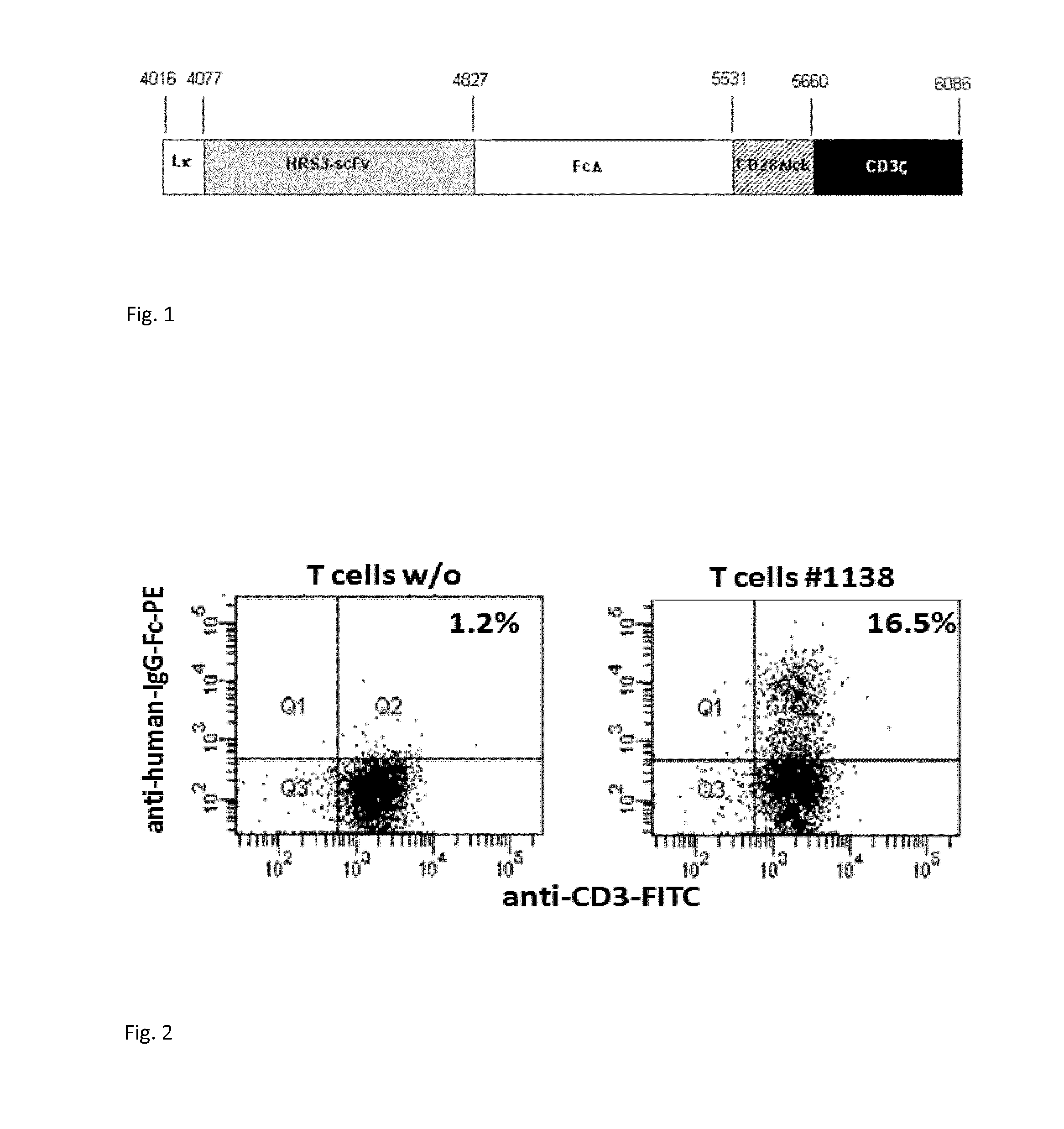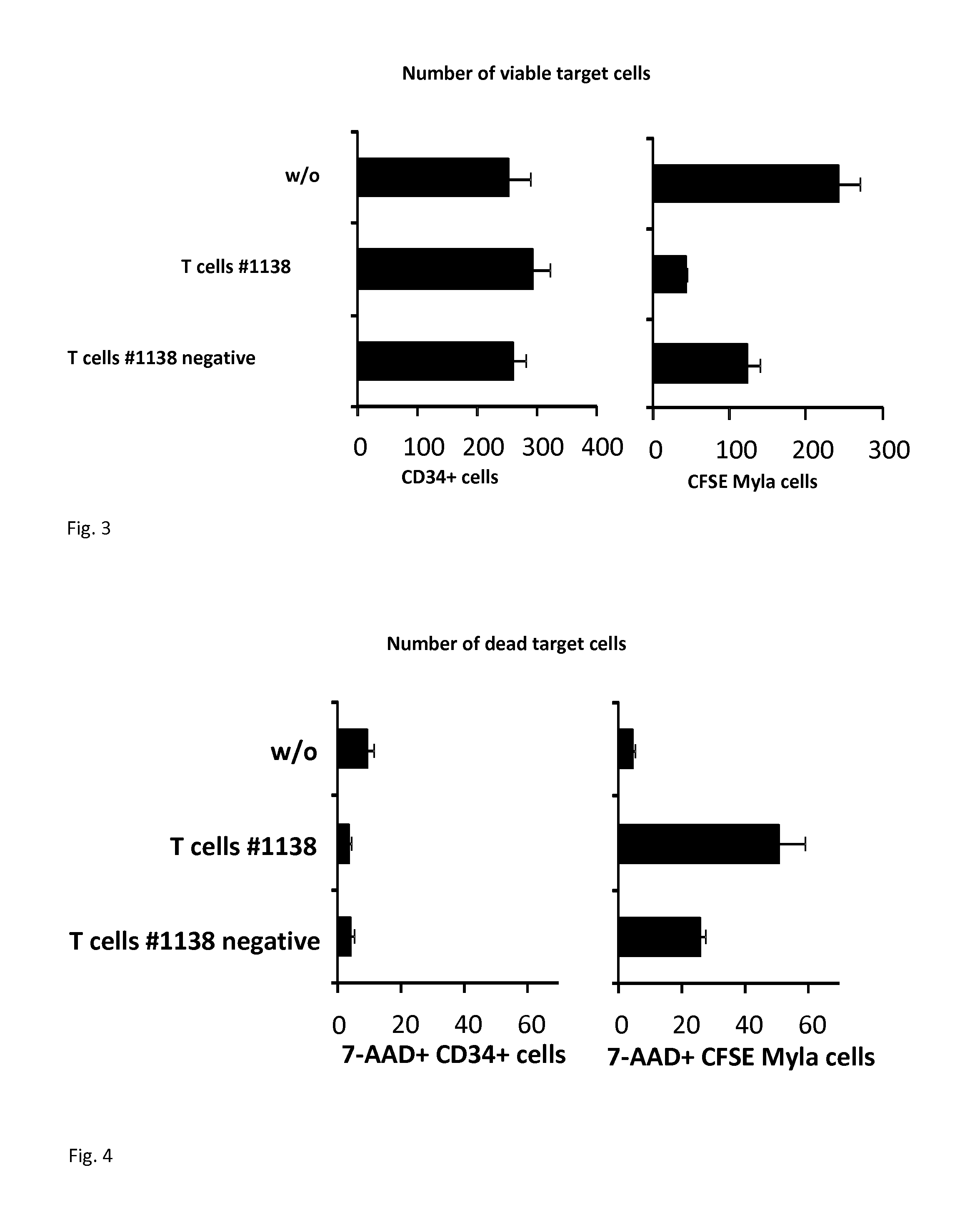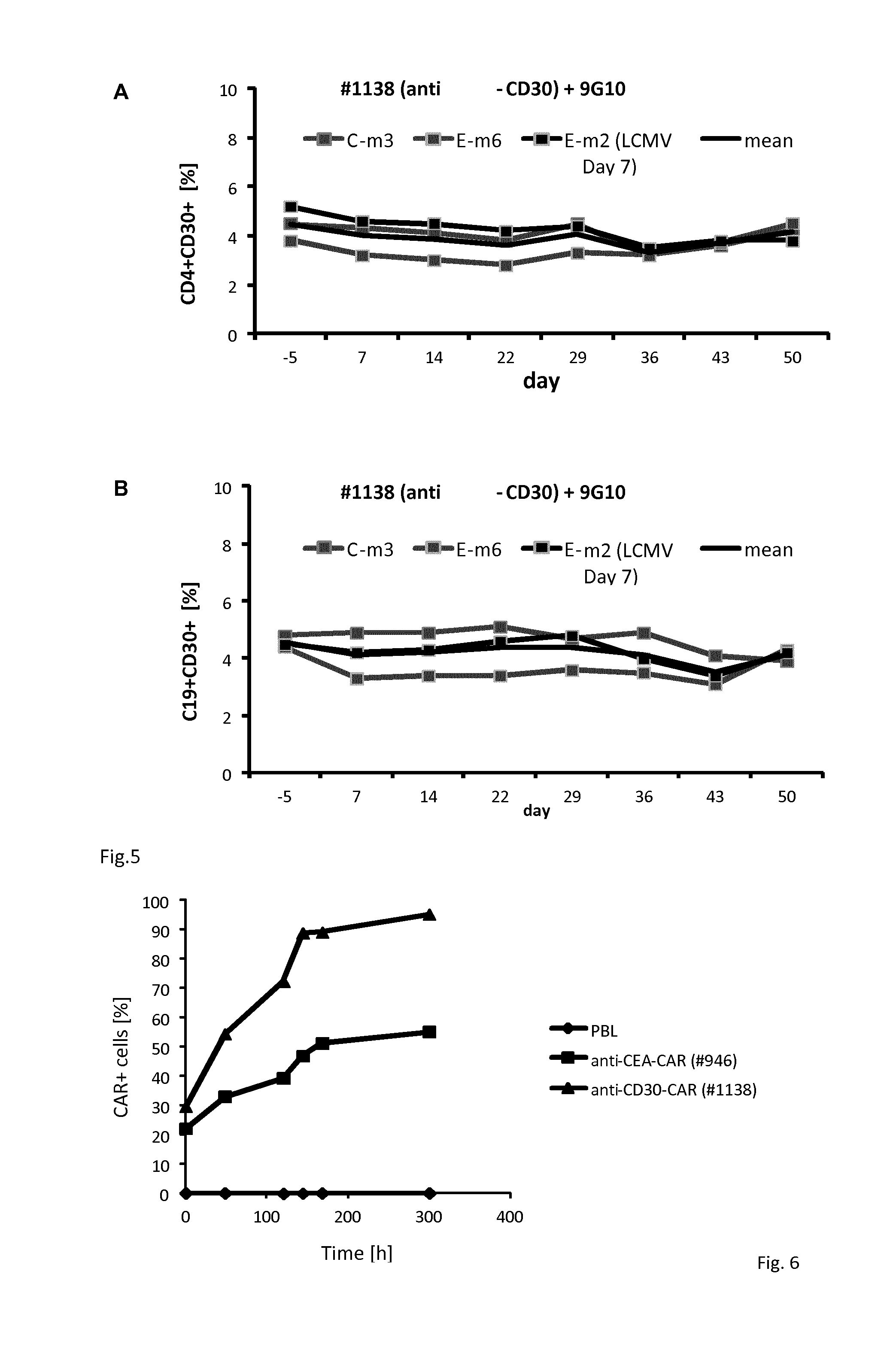Anti cd30 chimeric antigen receptor and its use
- Summary
- Abstract
- Description
- Claims
- Application Information
AI Technical Summary
Benefits of technology
Problems solved by technology
Method used
Image
Examples
example 1
Activity of CAR #1138 Modified T-Cells Toward CD30+ Tumor and Healthy Cells
[0060]Engineering of T-Cells with CAR #1138
[0061]Engraftment of human peripheral T-cells with the #1138 CAR was assessed by two colour flow cytometry 12 hrs after transduction. FIG. 2 shows a dot blot analysis of CAR engineered T-cells. The number of T-cells with #1138 CAR expression was 16.5% of all T-cells.
Purification of T-Cells with CAR #1138 and Control T-Cells
[0062]T-cells #1138 were cultivated for 60 hrs, labelled with the anti-human IgG-Fc-FITC, antibody which binds to the CAR, and the anti-CD3-PE antibody, which identifies the T-cells, and sorted using the FACSAria III cell sorter. Gates were set for CD3+ CAR #1138+ and CD3+ CAR #1138−T-cells. Aliqouts of sorted cells were re-analyzed by FACS. The purity of CD3+#1138+ and CD3+#1138− T-cells was 94.4% and 99.6%, respectively.
Isolation of Allogeneic CD34+ Hematopoietic Stem Cells
[0063]CD34+ cells were isolated from peripheral blood of a volunteer donor...
example 2
No Toxic Activity of CAR #1138 Engineered T-Cells Toward Healthy Human B- and T-Cells in a Mouse Model
Dose Selection
[0070]Human CD34+ hematopoietic stem cells were isolated from cord blood. New born Rag2− / − common gamma chain− / − mice were transplanted with 3×105 CD34+ hematopoietic stem cells to engraft the human hematopoietic system. Successfully engrafted animals were transplanted with 2.5×106 T-cells per mouse by a single injection into the tail vein.
Animals / Animal Maintenance
[0071]Species: Mouse[0072]Strain / Stock: Rag2− / − cy− / −[0073]Selection of species: The T- and B-cell deficient mouse model was used to engraft the human hematopoietic system; the reconstituted hematopoietic system closely mimics the human situation.
Identification of Animals
[0074]
TABLE 1123456789101112131415161718192021A-A-A-B-B-B-C-C-C-C-D-D-D-D-E-W-E-E-E-E-E-w1w2m1w1w2m1w1w2m1m3w1m1m1m2w1m1m2m3m4m5m6Table 1A-E = breeding group;m = malew = female;1-6 mouse number
Transplantation of Human Hematopoiesis
[0075]Rag2...
example 3
Specific Expansion of #1138 CAR Modified T-Cells
[0096]Engineering of T-cells with CAR #1138 and #946
[0097]Engraftment of human peripheral T-cells with #1138 and for comparison #946 CAR, see Hombach A, et. Al., Gene Ther. 2010 October; 17(10):1206-13. doi: 10.1038 / gt.2010.91. Epub 2010 Jun. 17, harbouring a CEA-specific scFv binding domain CEA was assessed by two colour FACS after 12 hrs after transduction. The initial efficiency was 29% for #1138 CAR and 22% for #946 CAR T-cells, respectively.
Monitoring T-Cells with CAR #1138 and #946
[0098]After transduction cells were cultured in Xvivo15 medium supplemented with 10% FCS and IL-2 (500 U / ml). Medium was replaced once a week, IL-2 was added every 3rd day. A sample of cells was removed at different time points and CD3+ T-cells were analyzed for CAR expression utilizing FITC-conjugated anti-mouse and PE-conjugated anti-human IgG1 Fc antibodies. Data are summarized in FIG. 6.
Conclusions
[0099]The number of #1138 CAR T-cells increased subs...
PUM
| Property | Measurement | Unit |
|---|---|---|
| Fraction | aaaaa | aaaaa |
| Fraction | aaaaa | aaaaa |
| Nucleic acid sequence | aaaaa | aaaaa |
Abstract
Description
Claims
Application Information
 Login to View More
Login to View More - R&D
- Intellectual Property
- Life Sciences
- Materials
- Tech Scout
- Unparalleled Data Quality
- Higher Quality Content
- 60% Fewer Hallucinations
Browse by: Latest US Patents, China's latest patents, Technical Efficacy Thesaurus, Application Domain, Technology Topic, Popular Technical Reports.
© 2025 PatSnap. All rights reserved.Legal|Privacy policy|Modern Slavery Act Transparency Statement|Sitemap|About US| Contact US: help@patsnap.com



